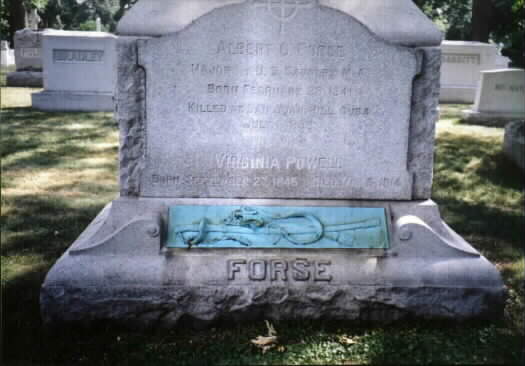Born on February 28, 1841, he graduated from the United States Military Academy in 1865. He was serving with the 1st United States Cavalry when he was killed-in-action during the Spanish-American War at San Juan Hill, Cuba, on July 1, 1898. He is buried in Section 1 of Arlington National Cemetery.
His wife, Virginia Powell Forse (September 27, 1845-May 6, 1914) never remarried and is buried with him.
Major Albert Gallatin Forse
Born in Pennsylvania February 28, 1841
Killed in Action (Battle of San Juan, Cuba) July 1, 1898
Cadet U.S. Military Academy 1861-65
Second Lieutenant June 23, 1865
First Lieutenant October 15, 1866
Captain March 4, 1879
Major December 11, 1896
Served with 1st Cavalry Regiment 1865-96
Regimental Quartermaster 1866-69
Regimental Adjutant 1869-72
Served with 7th Cavalry Regiment 1896-97
Served with 1st Cavalry Regiment 1897-98
“The Story of the Nez Perce” by Lt. Albert Gallatin Forse, 1st US Cavalry
A.G. Forse in cadet uniform. 5-1/4×3-3/4 oval, on original mount with gilt imprint of Brady, New York. New York: c.1865?. On the reverse is noted in pencil, “Forse, A.G. Killed an San Juan Hill 1898. Capt. Indian Wars.”
Cadet Albert G. Forse to be second lieutenant, June 23, 1865, vice Trimble, promoted.
Second Lieutenant Albert G. Forse to be first lieutenant, October 15, 1866, vice Hall, the regimental adjutant.
By Colonel Theodore Roosevelt, The Rough Riders
“On the hill-slope immediately around me I had a mixed force composed of members of most of the cavalry regiments, and a few infantrymen. There were about fifty of my Rough Riders with Lieutenants Goodrich and Carr. Among the rest were perhaps a score of colored infantrymen, but, as it happened, at this particular point without any of their officers. No troops could have behaved better than the colored soldiers had behaved so far; but they are, of course, peculiarly dependent upon their white officers. Occasionally they produce non-commissioned officers who can take the initiative and accept responsibility precisely like the best class of whites; but this cannot be expected normally, nor is it fair to expect it. With the colored troops there should always be some of their own officers; whereas, with the white regulars, as with my own Rough Riders, experience showed that the non-commissioned officers could usually carry on the fight by themselves if they were once started, no matter whether their officers were killed or not.
“At this particular time it was trying for the men, as they were lying flat on their faces, very rarely responding to the bullets, shells, and shrapnel which swept over the hill-top, and which occasionally kill or wounded one of their number. Major Albert G. Forse, of the First Cavalry, a noted Indian fighter, was killed about this time.”
Spanish-American War Report:
Major Albert G. Forse, of the First United States Cavalry, who was among the killed, had been just thirty-seven years in the Government service and has seen a good deal of Indian fighting. He was born in Pennsylvania and was appointed on July 1, 1861 from Ohio to the United States Military Academy at West Point. He was graduated on June 23, 1865.
Cadet Forse was promoted to a Second Lieutenancy n the Fist Cavalry upon graduation and his first services was in garrison at New Orleans, Louisiana, in October and November 1865. He then served on frontier duty at San Antonio, Texas, until January of the following year, when the regiment was transferred to Carlisle Barracks, Pennsylvania. From April to September 1868, Lieutenant Forse served on frontier duty at Fort McDowell, Arizona. He acted as Quartermaster for the First Cavalry from September 7, 1866 to December 1869.
His appointment as First Lieutenant in the First Cavalry was made on October 15, 1866, and from November 19 of that year till the following January 28, he was on recruiting service. From February to June 1867, he was on frontier duty at Fort Walla Walla, Washington, and then spend about four months in scouting.
Lieutenant Forse spent the next several years in Idaho, about that time saw his first active service. He was engaged in fighting Nez Perces Indians in July 1877 and November 1875. After a months service at Fort Lapwai, Idaho, in 1878, he started scouting again and kept at it until September of that year. On July 8 and 20, 1878, he was engaged against the Bannock and Piute Indians. He was later transferred to Camp Harney, Oregon, where he stayed until October 29, 1878, when he got a leave of absence for seven or eight months. In this interim he was appointed, on March 4, 1879, Captain in the First Cavalry, and on returning to duty went again, with his regiment, to Fort Walla Walla.
From July 1879 to May 1880, he was alternatively at Fort Howard, Idaho and engaged in scouting. He took part in the affair at Big Creek against the Sheepeater Indians on August 20, 1879. After service at Forts Walla Walla, Lapwai, Idaho and Custer, Montana, he was engaged on November 5, 1887, on the Crow Reservation, Montana, against the Crow Indians.
Captain Forse was appointed Major in the Seventh United States Cavalry on December 11, 1895 and transferred to his old regiment, the First, on January 7, 1897. Since then he has been Major of the First.
FORSE, ALBERT G
- MAJOR 1ST US CAV
- VETERAN SERVICE DATES: Unknown
- DATE OF DEATH: 07/01/1898
- DATE OF INTERMENT: Unknown
- BURIED AT: SECTION W DIV SITE LOT 278
ARLINGTON NATIONAL CEMETERY
FORSE, VIRGINIA WIDOW OF ALBERT G
- DATE OF DEATH: 05/06/1914
- DATE OF INTERMENT: Unknown
- BURIED AT: SECTION W D E SITE LOT 278
ARLINGTON NATIONAL CEMETERY - C/O DIRECTOR ARLINGTON, VA 22111-0000
- (WIFE OF AG FORSE – MAJOR 1ST US CAV
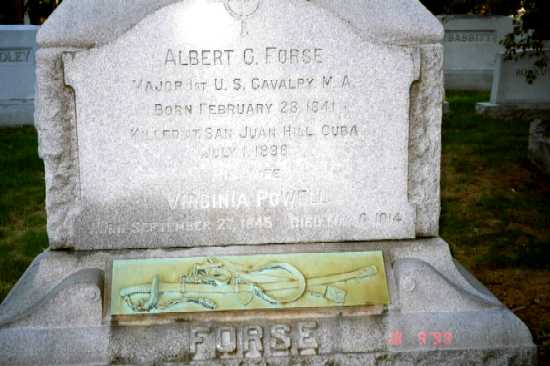
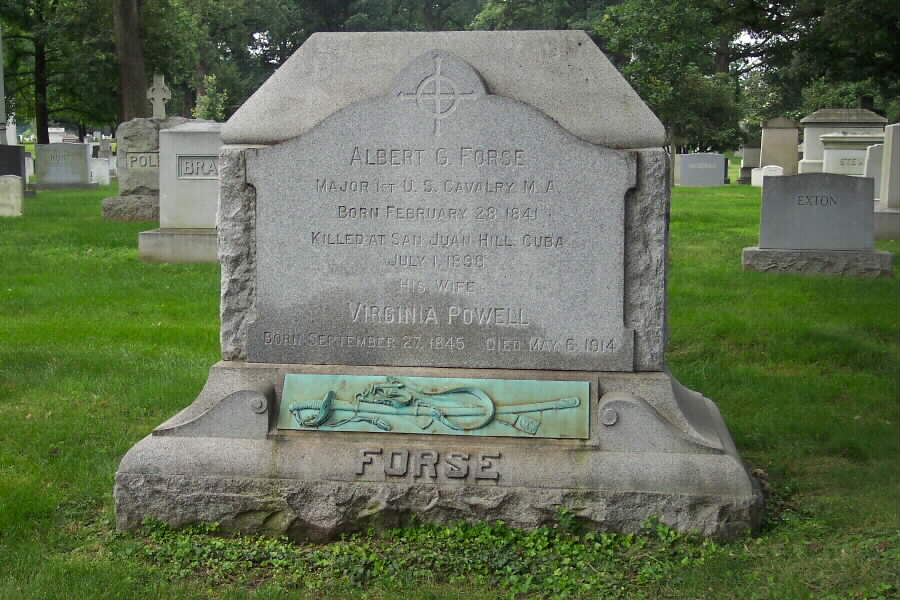
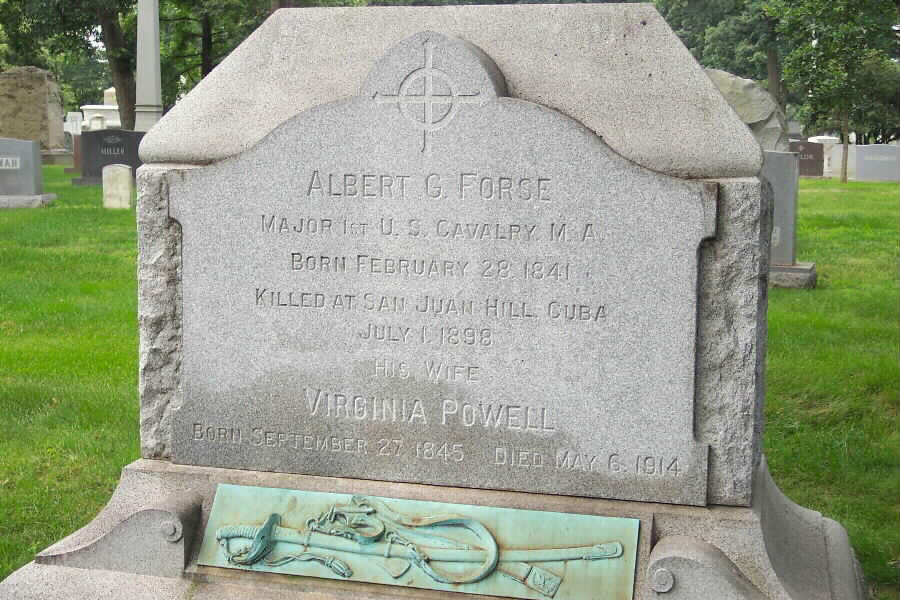
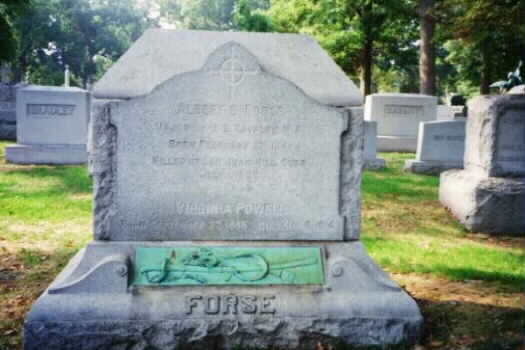
Michael Robert Patterson was born in Arlington and is the son of a former officer of the US Army. So it was no wonder that sooner or later his interests drew him to American history and especially to American military history. Many of his articles can be found on renowned portals like the New York Times, Washingtonpost or Wikipedia.
Reviewed by: Michael Howard

